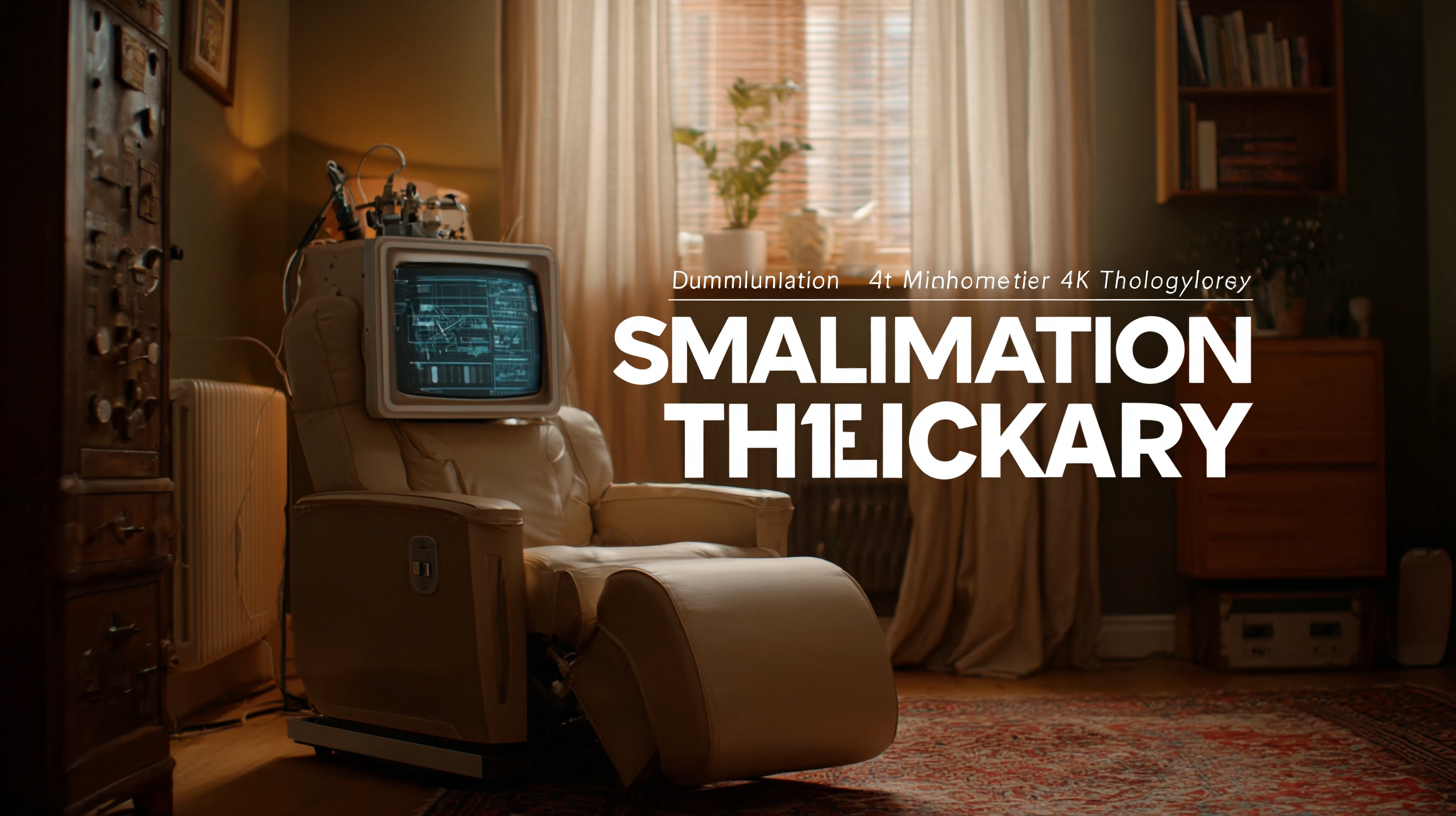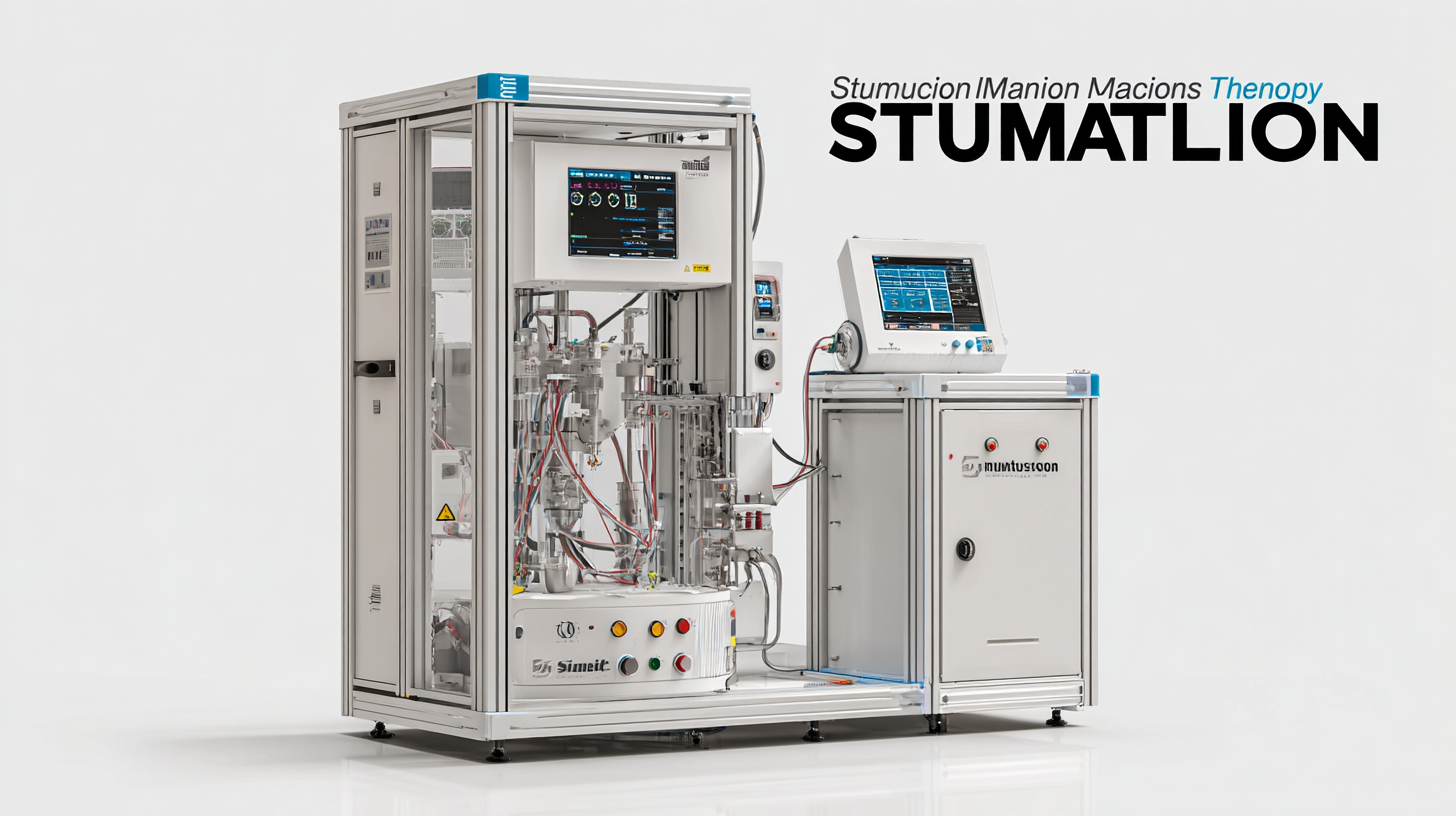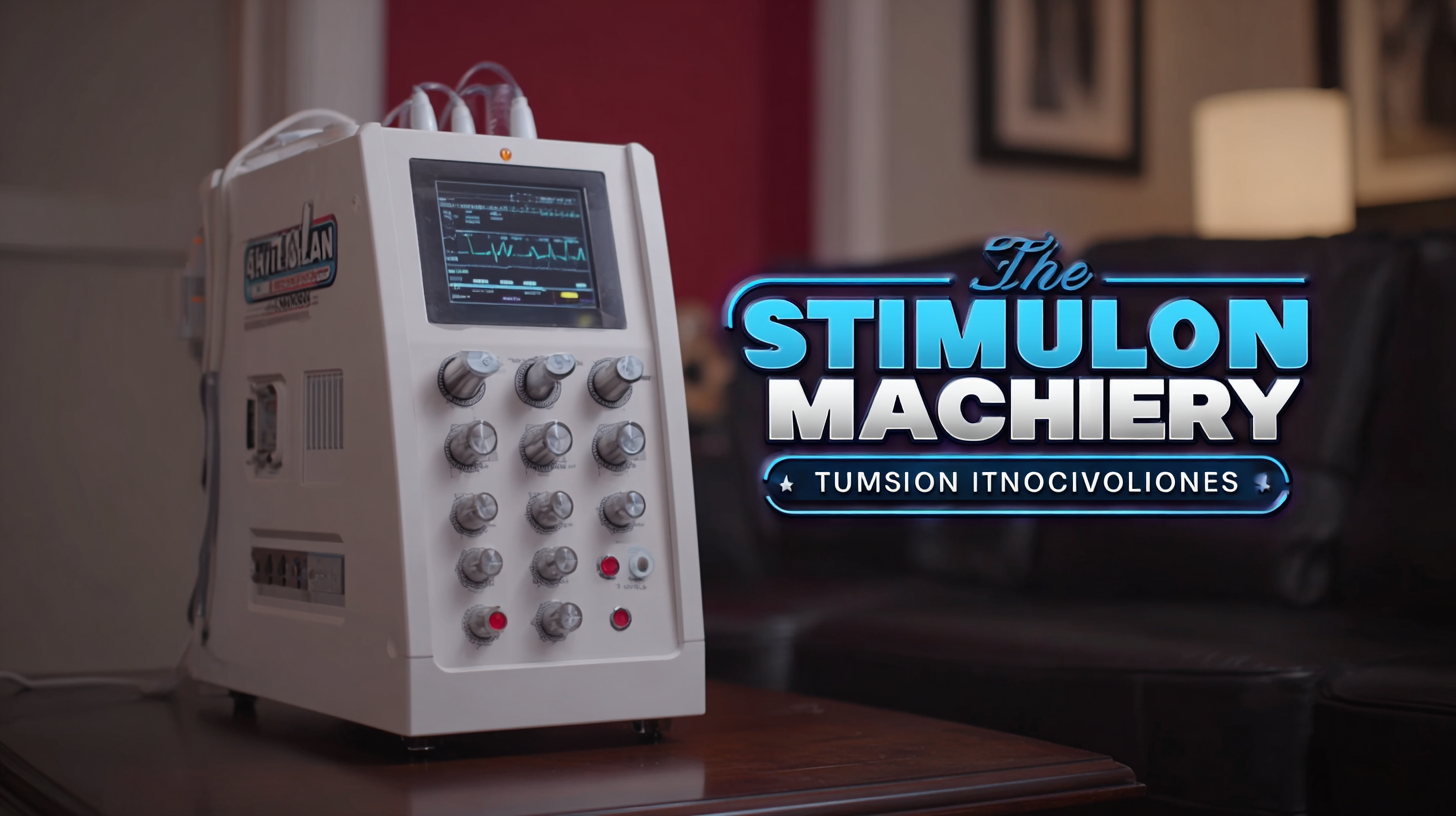Bankim Nagar, Siliguri, West Bengal
- GST NO. : 19BHDPS7640K1ZR
Discover the Top Innovations in Best Stimulation Machine Therapy for Global Buyers
In recent years, Stimulation Machine Therapy has emerged as a pivotal innovation in the healthcare sector, revolutionizing the way patients experience rehabilitation and pain management. According to a report by Market Research Future, the global stimulation therapy market is projected to reach $13.5 billion by 2023, driven by advancements in technology and increasing demand for non-invasive treatment options. This growth underscores the significance of understanding the latest innovations in stimulation machines, which are not only enhancing patient outcomes but also streamlining treatment processes for healthcare providers. As global buyers seek effective solutions, it is crucial to explore the diverse applications of Stimulation Machine Therapy across various industries and the transformative effects these advancements are having in therapeutic practices worldwide.

Top Benefits of After-Sales Service for Stimulation Machines in Global Markets
When considering the purchase of stimulation machines, after-sales service is a crucial factor that buyers should not overlook. The complexity of these devices requires specialized knowledge and support to ensure optimal performance and longevity. Reliable after-sales service includes not only technical assistance and repairs but also regular maintenance checks, which can significantly enhance the lifespan of the machines. Buyers in global markets, therefore, benefit from suppliers who provide comprehensive support options, enabling them to minimize downtime and maximize operational efficiency.
Moreover, a robust after-sales service can be a key differentiator in a competitive landscape. Global buyers seek assurance that they will receive prompt help and expert guidance in case of any issues. This not only builds trust but also fosters long-term relationships between manufacturers and clients. By offering training and ongoing support, companies can empower their customers to fully utilize the features of their stimulation machines, leading to improved outcomes in therapeutic settings. In a market where technology continues to evolve rapidly, effective after-sales service becomes essential for sustaining customer satisfaction and loyalty.
Discover the Top Innovations in Best Stimulation Machine Therapy for Global Buyers - Top Benefits of After-Sales Service for Stimulation Machines in Global Markets
| Innovation Type | Key Features | Market Impact | After-Sales Services Benefits |
|---|---|---|---|
| Portable Stimulation Devices | Lightweight, user-friendly, battery-operated | Increased accessibility for home therapy | Personalized support, easy troubleshooting |
| Wireless Neurostimulation | Bluetooth connectivity, app integration | Enhanced user engagement and compliance | Remote monitoring, regular software updates |
| Multi-Functional Therapy Devices | Combination of TENS, EMS, and microcurrent | Versatile treatment options for various conditions | Comprehensive training, customer feedback support |
| Smart Stimulation Machines | AI-driven customization, progress tracking | Tailored recovery plans, improved outcomes | Dedicated account managers, warranty options |
Understanding Maintenance Costs: What Buyers Should Consider for Stimulation Therapy Devices
When considering the purchase of stimulation therapy devices, one crucial aspect that often goes overlooked is the long-term maintenance costs associated with these machines. Buyers should not only focus on the initial purchase price but also evaluate ongoing expenses, which can significantly impact budget considerations. This includes not only routine maintenance and servicing but also the costs of consumables such as electrodes and gels that are essential for optimal device performance.
Additionally, prospective buyers should assess the availability of support and replacement parts from the manufacturer. Reliable customer service can greatly influence both the lifespan of the device and the ease of obtaining necessary components, thereby minimizing downtime. Understanding warranty agreements and service contracts can also provide insights into what maintenance support is included and what additional expenses might arise. By delving into these factors, buyers can make informed decisions, ensuring that their investment in stimulation therapy devices yields significant therapeutic benefits without becoming a financial burden.
Digital Innovations Transforming Stimulation Machine Therapy: Key Features to Look For
In recent years, the stimulation machine therapy landscape has experienced a wave of digital innovations that are reshaping treatment efficacy and user experience. One of the most notable advancements is the integration of AI-driven analytics. These smart systems can assess patient responses in real-time, allowing for personalized adjustments that enhance therapeutic outcomes. This focus on individualization not only maximizes the effectiveness of treatment but also increases patient engagement, making therapy more dynamically responsive to specific needs.
 Another key feature to consider is mobility and connectivity. The latest stimulation machines are designed with portability in mind, enabling users to manage their therapy sessions from the comfort of their homes or on the go. Coupled with mobile applications, these devices provide seamless scheduling and monitoring, ensuring users stay on track while maintaining flexibility. Additionally, enhanced data tracking capabilities allow for more informed discussions between patients and healthcare providers, making it easier to evaluate progress and modify treatment plans as necessary.
Another key feature to consider is mobility and connectivity. The latest stimulation machines are designed with portability in mind, enabling users to manage their therapy sessions from the comfort of their homes or on the go. Coupled with mobile applications, these devices provide seamless scheduling and monitoring, ensuring users stay on track while maintaining flexibility. Additionally, enhanced data tracking capabilities allow for more informed discussions between patients and healthcare providers, making it easier to evaluate progress and modify treatment plans as necessary.
Essential Tips for Maintaining Your Stimulation Machine to Ensure Longevity and Performance
Stimulation machines have become increasingly popular in various therapeutic applications, with a market report by Research and Markets projecting a compound annual growth rate (CAGR) of 6.3% from 2021 to 2026. As these devices gain traction among global buyers, proper maintenance is crucial to maximize their longevity and performance. Regular cleaning and calibration not only ensure optimal functioning but also enhance therapeutic outcomes. It is recommended to refer to the manufacturer’s guidelines for specific maintenance schedules that include checking the power supply, inspecting wires for wear, and replacing worn parts to maintain efficacy.
In addition to routine upkeep, operators should also stay informed about advancements in stimulation technology that could impact performance. According to a report by the Global Stimulation Device Market, emerging innovations such as biofeedback integration and wireless capabilities are changing how therapists use these machines. By adjusting settings and ensuring that all components are updated, users can effectively harness these advancements, thus maximizing the benefits of their stimulation machines. Ultimately, a proactive approach to maintenance will not only extend the life of the equipment but also significantly improve therapeutic effectiveness for patients.
Exploring the Global Trends in Stimulation Therapy: Insights for International Buyers
Stimulation therapy has emerged as a crucial innovation in the global healthcare landscape, with significant advancements propelling its effectiveness in treating various conditions. Notably, the global market for stimulation therapy equipment is experiencing a surge, driven by increasing awareness and the rising prevalence of chronic diseases. According to recent data, the global epilepsy diagnosis and treatment market is projected to reach approximately $104.25 billion by 2024, with an anticipated growth to $367.47 billion by 2033, reflecting a remarkable compound annual growth rate (CAGR) of 15%.
International buyers are keenly exploring these trends, recognizing the potential for improved patient outcomes and enhanced quality of care. Innovations in technology, such as next-generation sequencing and custom phosphates, are paving the way for more tailored treatment options. Furthermore, the pain management device market is set to grow significantly, projected to reach $7.53 billion by 2033. As global health systems adapt to these advancements, the implications for international buyers are profound—providing opportunities for investment and collaboration in the rapidly evolving world of stimulation therapy.


